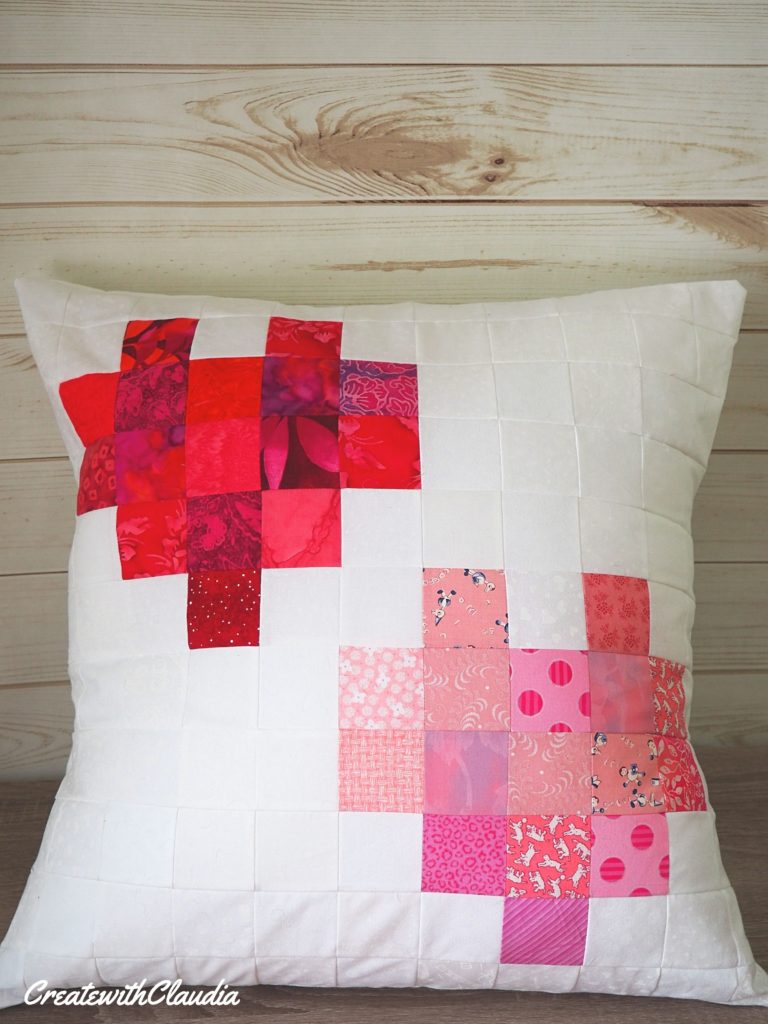Pixelated Hearts Throw Pillow Pattern
Everywhere I look lately I see pixelated images. They are in cartoons, movies, clothing, home décor, and even quilts.
If you are a quilter like me, then pixelation is tailor-made for you. It is squares of various colors and patterns put together to form a picture. If you think about it, you could probably call any patchwork quilt a pixelated one.
It’s simple to sew these types of patterns together because they are all squares. Sure, there is planning involved so you have to sew the pattern in the right order, but that is the most difficult thing about this process, and it is easy to overcome by staying organized.
I thought it would be fun to give it a try, so I to came up with this throw pillow. The result is this “Scrappy Pixelated Pink Hearts” pattern, and it is perfect for Valentine’s Day.
An added bonus is that it is another one of my scrap buster projects, so you don’t need to buy too many supplies for it, and it can be sewn in an afternoon.
So let’s get started!
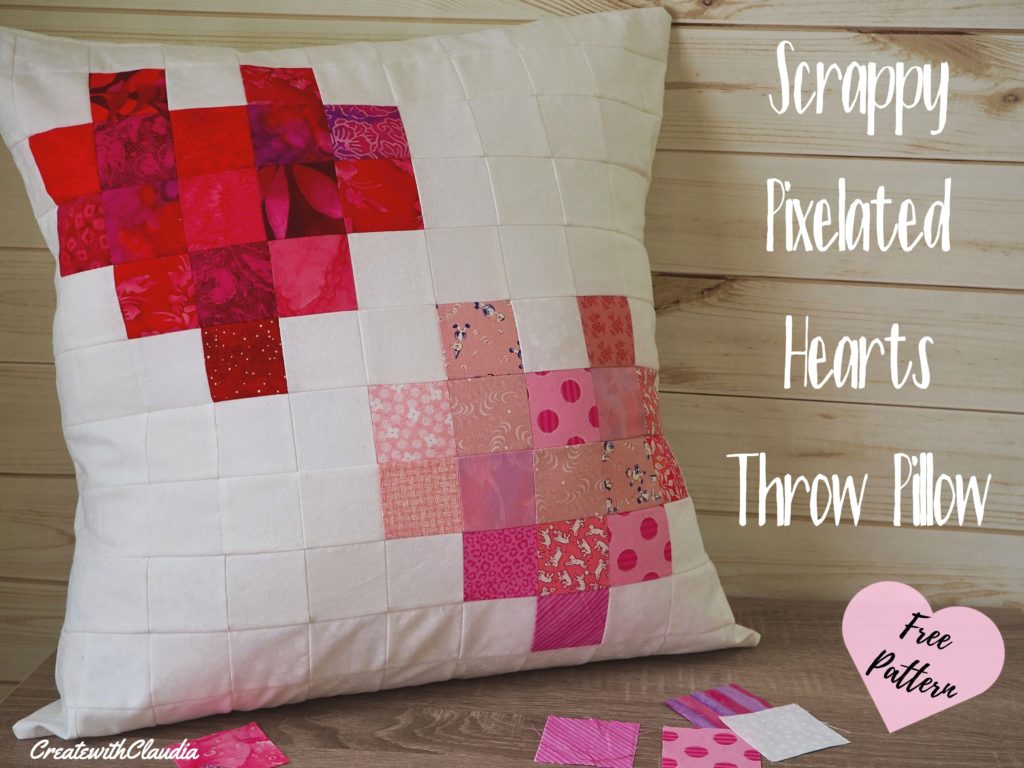
Pattern specs:
- This pattern makes a 24” throw pillow (with an envelope style case)
- The finished pillow case will measure 22” square and it will fit a 24” pillow form
- A scant 1/4” seam allowance is used
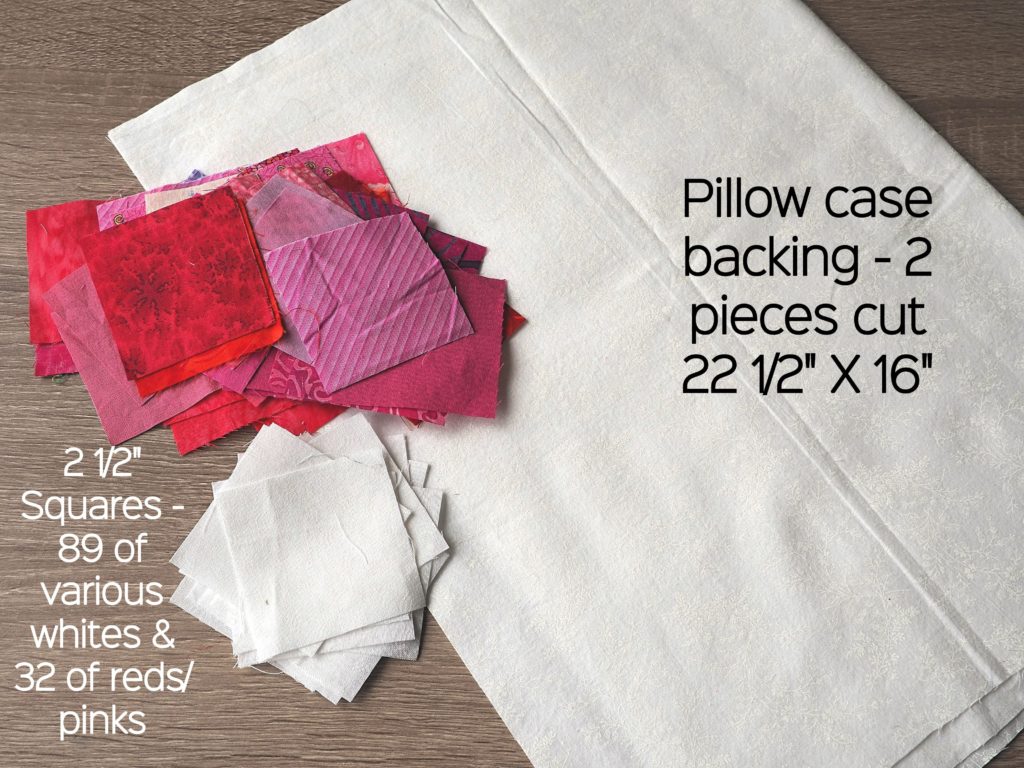
Supplies you will need:
- For the front – scrap fabric cut into 2 1/2” squares – 16 in the darker pinks/reds, 16 in the lighter pinks, 89 in various white on white fabrics – for a total of 121 fabric squares
- For the back – 2 pieces of white fabric, both cut 22 1/2” X 16”
- 24” pillow form – Not too fluffy or the pillow won’t look right
- General sewing supplies
Items You Can Use To Make This Craft
You can find many of the items that I used to make this project in my Amazon Store.
As an Amazon Associate I earn from qualifying purchases.
Pattern Grid
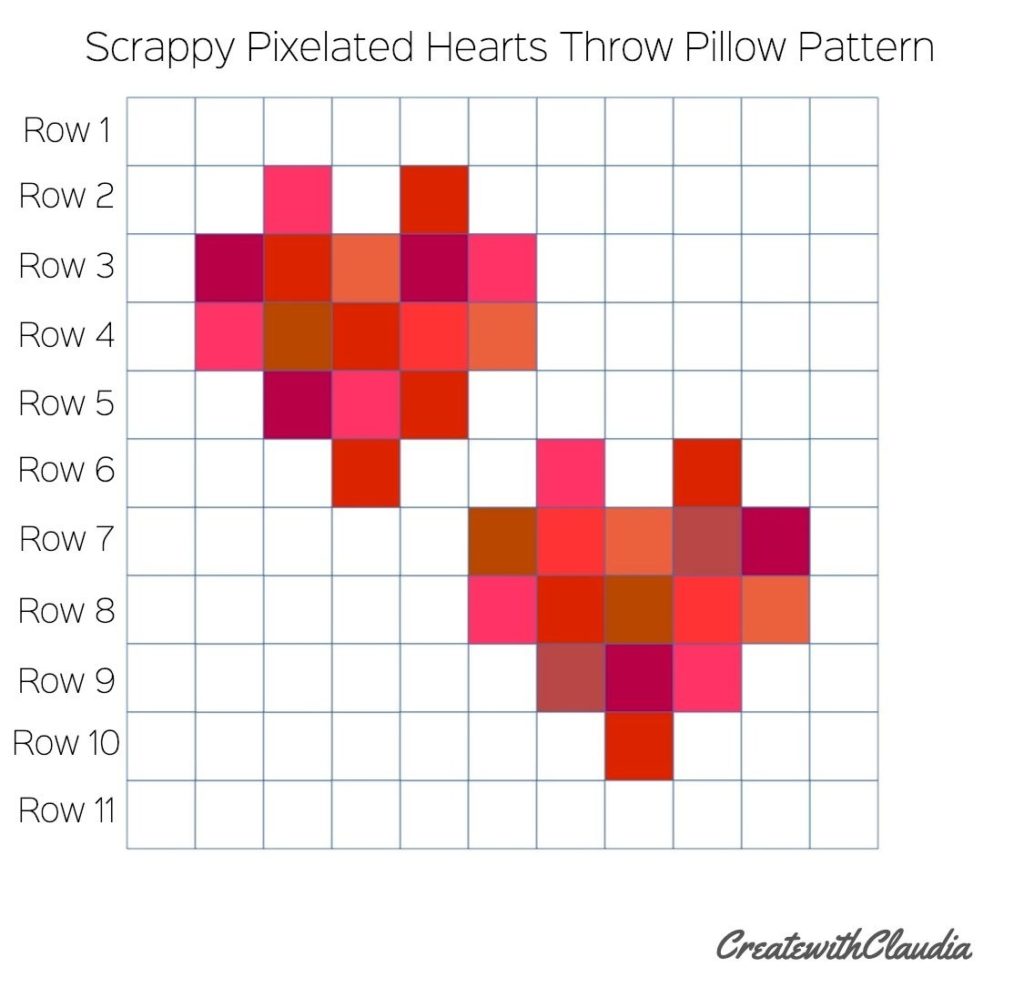
Step 1 – Lay out design
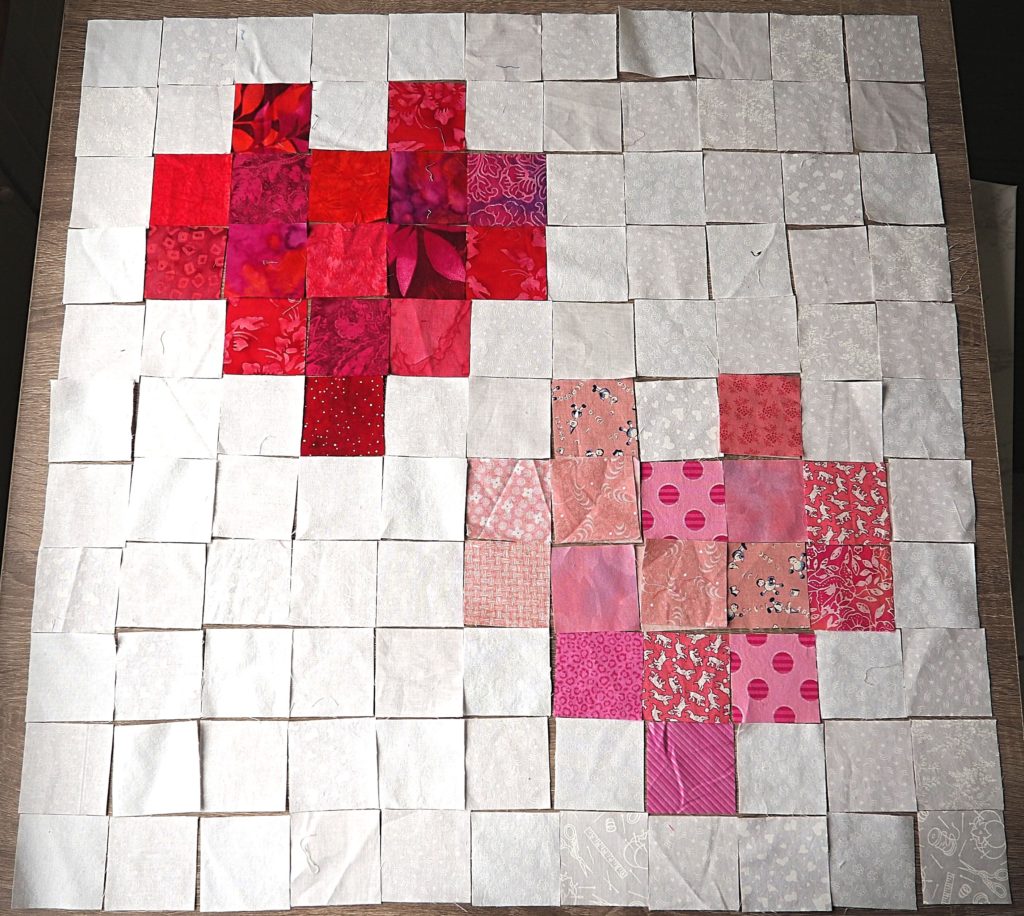
On a large, flat surface, lay out your squares, following the pattern grid.
Step 2 – Prepare to sew
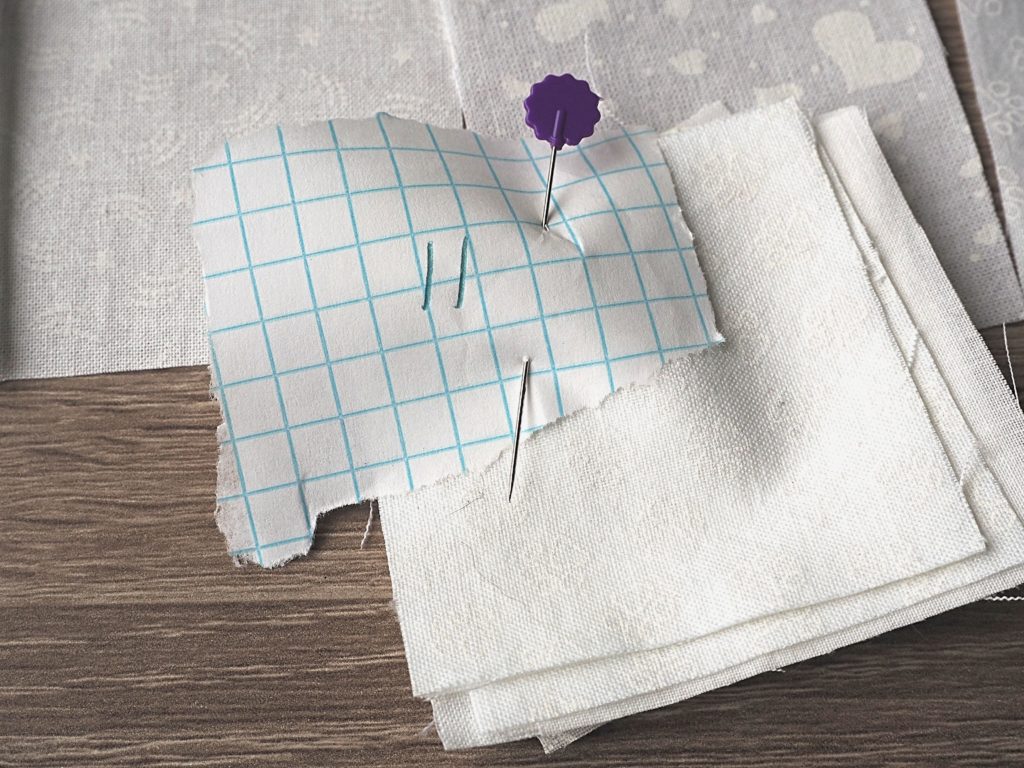
Get ready to sew the pieces together by organizing them. There are two ways to do this.
- If your flat surface is adjacent to your sewing machine, then you can just sew pairs together and keep sewing until the top is done.
- On the other hand, if you have to move pieces to your machine then follow this method. Cut 11 small pieces of scrap paper, number them, and set them aside. Starting with the top row (row 1), pick up the squares in order, and form a stack of squares for that row. Make sure the left piece of the row is on top. Take the scrap of paper with the number 1 on it and pin it through the stack for that row. Pin it in the top left of the square so you’ll know where the top corner is. Repeat with the rest of the rows.
Step 3 – Sew the front
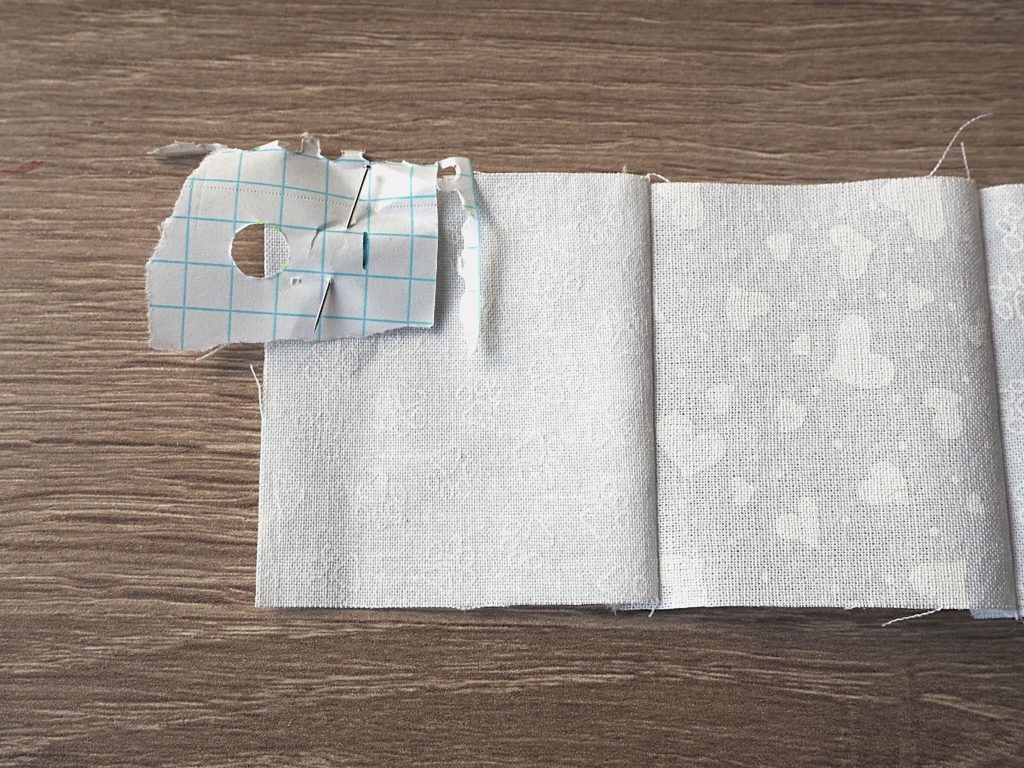
- Begin by sewing the individual rows together, using care to keep them in the correct order. Leave the paper marker with the row number on it, pinned to the top left corner of the row so you know the positioning.
- Once the individual rows are finished, start sewing them together. Take care not to sew over the paper row number (I learned that the hard way), but keep the labels in place until the front of the pillow case is done.
- Lastly, press the completed top and set aside. If you used the 1/4” seam allowance, your top should measure 22 1/2” X 22 1/2”.
Pressing tip: When piecing the individual rows, make sure to press each seam in the same direction and alternate that direction with each row. For example: Press row 1 seams to the left, row 2 seams to the right, row 3 seams to the left and so on. This will make it much easier to sew the finished rows together because you will be able to nest the seams.
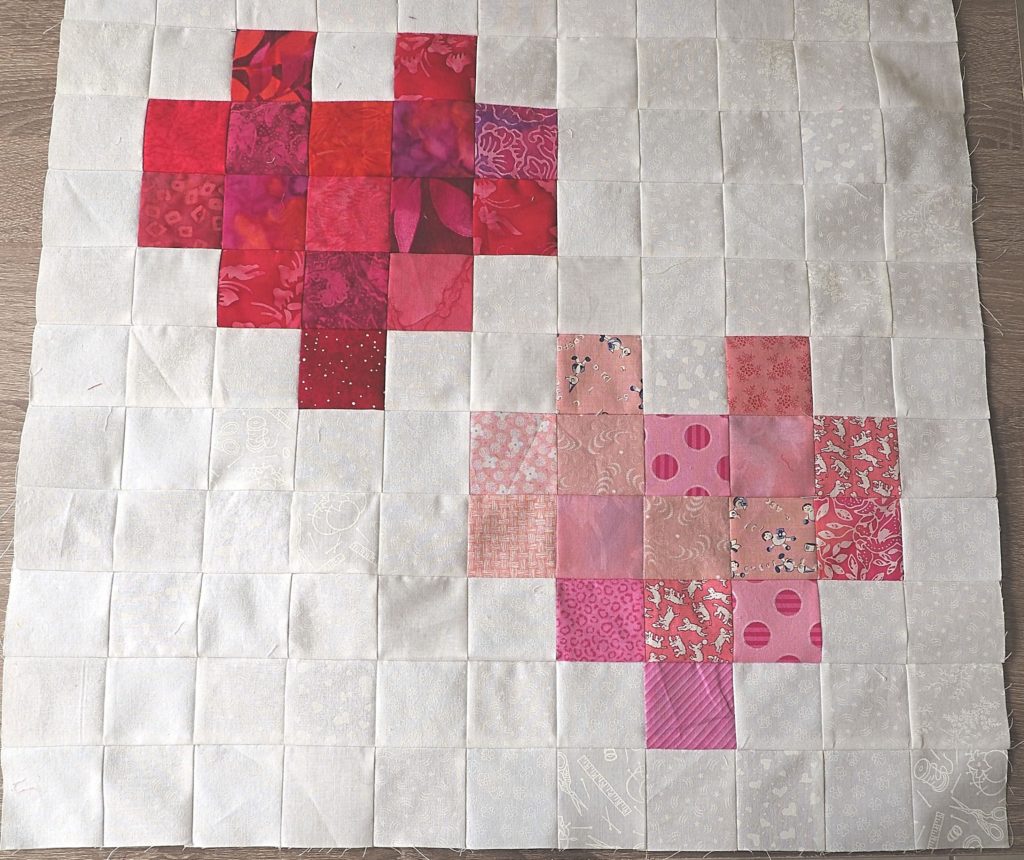
Step 4 – Sew the back
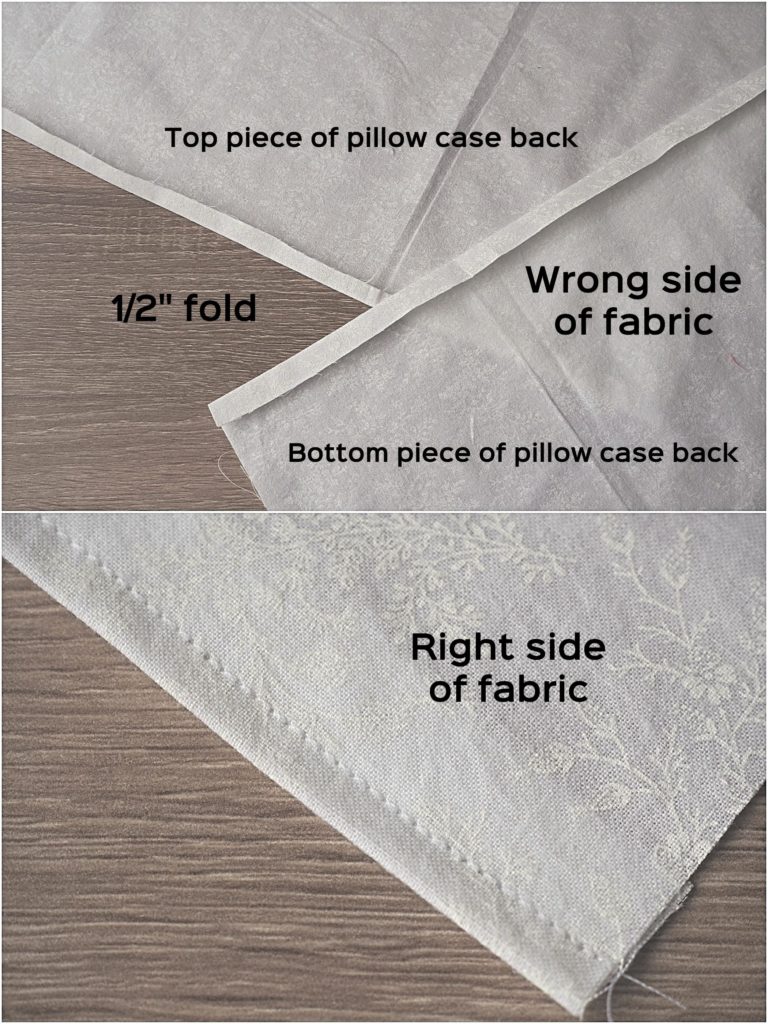
- First, take one of the large pieces of back fabric and lay it, wrong side facing up.
- Next, fold over one of the long edges about 1/2” and press.
- Lastly, sew down the long edge.
- Repeat with the other piece.
Step 5 – Assemble the pillow case
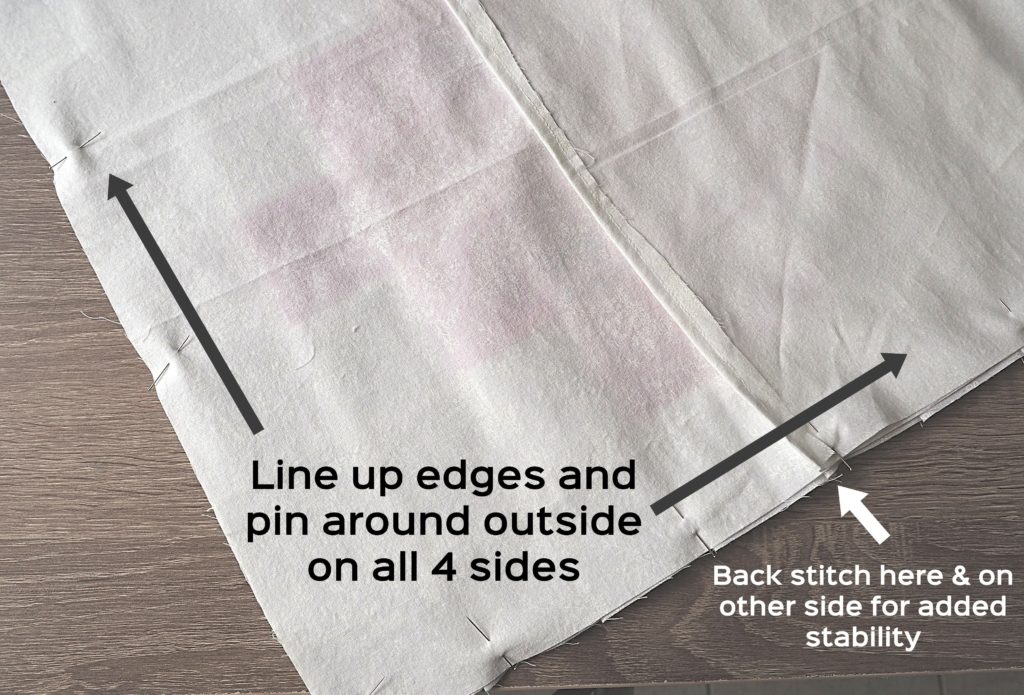
- Lay the completed front on a flat surface, right side facing up.
- Next, lay one of the back pieces, right side facing down on top of the front piece, lining up the unfinished edges on the top and sides. The finished long edge will be in the middle of the pillow.
- After that, lay the second back piece, right side facing down with the unfinished edges lined up on the bottom and sides. The finished edges will be overlapping the other piece and that is ok.
- Pin along all four sides together, around the outside of the entire case.
- Then sew around the outside, still using the 1/4” seam. For extra stability, add a few backstitches along the edges of the opening of the case, as well as at every corner.
- Finally, trim off the corners, taking care not to snip any seams.
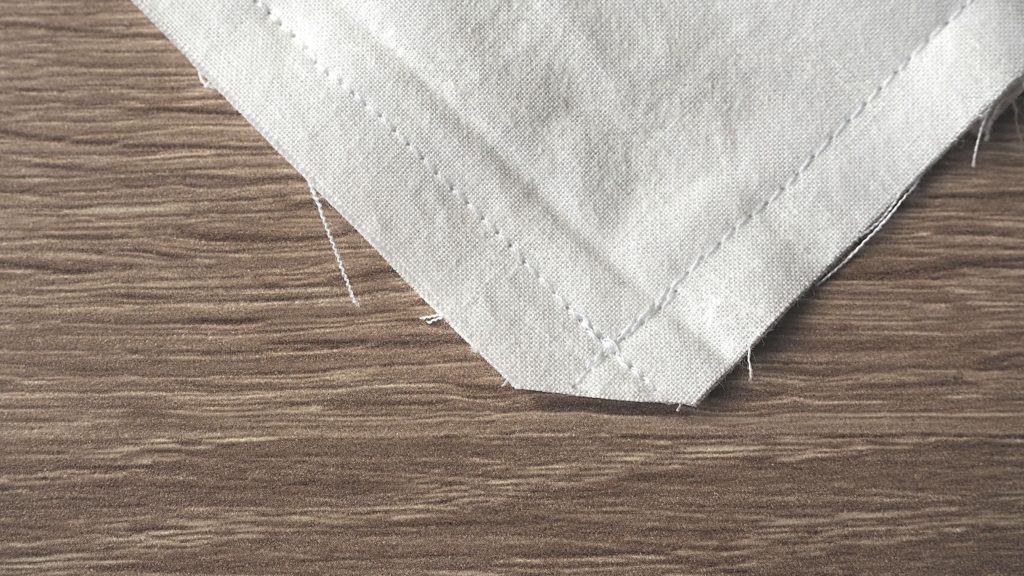
Step 6 – Finish
- Turn the case right side out. Make sure to get into the corners.
- Then insert the pillow form.
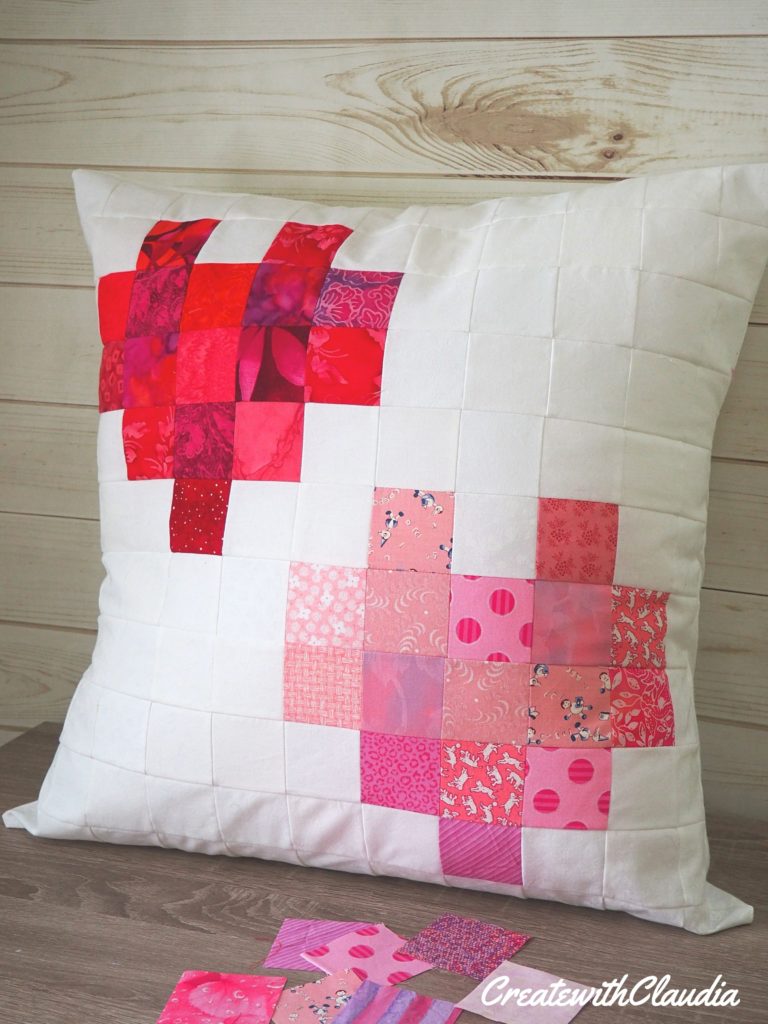
That is all there is to it. You now have an adorable big pillow that will look good anywhere.
My daughter has already claimed this one. Guess I will have to make another one for the living room!
